As I mentioned in my September 2021 recap, I happened upon a trip to Tirana, Albania somewhat randomly. After plans coalesced for a fall trip to Turkey, I made plans to visit the region beforehand to see Greece and potentially other countries in the area. A friend had been posting gorgeous aquamarine images from a European coast that I had incorrectly presumed was Croatia. After correcting my error, she encouraged me to check out the country she had called home over the past year.
I was able to find a good flight deal from my US home base of Orlando into Tirana and 2 months later, out of Athens. From there, I started reading all about the capital city. When I visit a completely new country, I generally plan my first day or two and bookmark lots of cool places to check out. Beyond that, I tend not to plan too much, and just let my experiences and explorations on the ground dictate what I do. After 5 days calling Tirana home, here are my eight favorite things to do that I suggest you try out too!
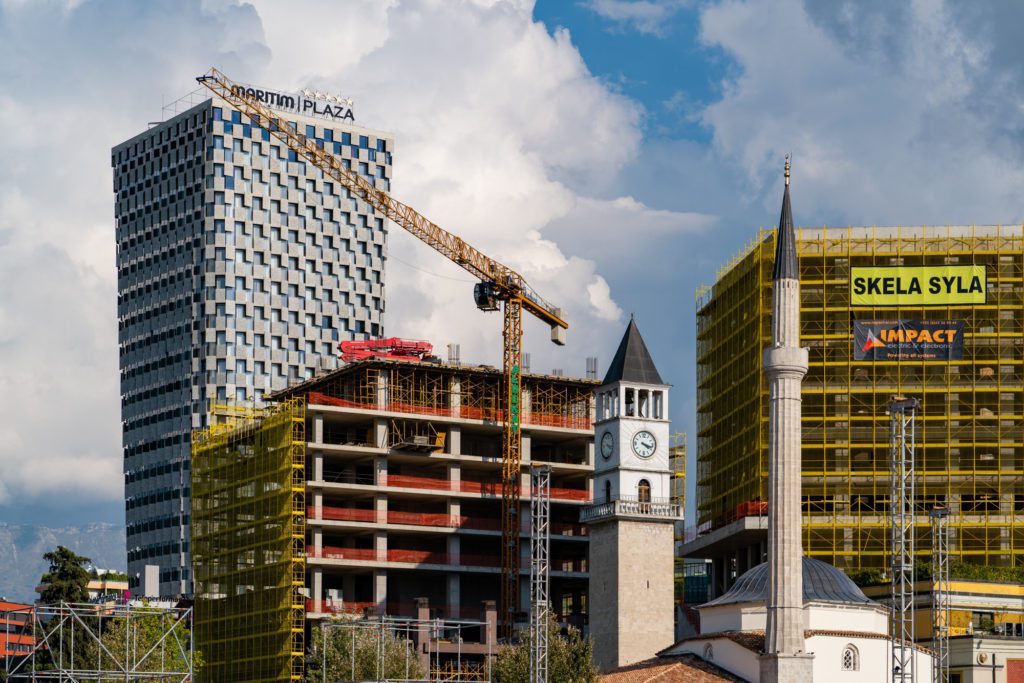
1. Skanderbeg Square
If you are staying anywhere near the center of Tirana, (which I would suggest as the city is very walkable), it is hard to miss the expansive Skanderbeg Square. New and under-construction skyscrapers rise up next to Ottoman era mosques and sculptures. The square is anchored by The National History Museum in the northwest corner, the Opera Theater to the east, and the 11-meter tall Skanderbeg Monument to the southeast.
Gjergj Kastrioti Skënderbeu, more commonly known as Skanderbeg, is the most famous hero of the ancient Albanians. He was the first leader to coalesce Albanian ethnic groups into a solid force and became a persistent thorn to the Ottoman Empires plans for regional domination. His continued wins against the invading forces earned him a hero status of his time and a permanent place in the lore of the Albanian people. The monument in the square bearing his name was erected in 1968, 500 years after his death. Allow 15 minutes to walk around and explore the space. Free.
2. BunkArt
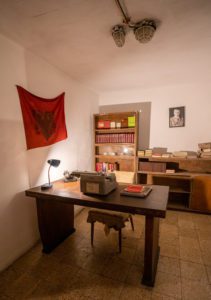
The Communist leader of Albania from 1946 to 1985, Enver Hoxha ruled the nation with an iron fist, closing its borders to outsiders and preventing its own citizens from leaving. In the early 60s, he broke relations with the Soviets, accusing them of not being communist-enough and around this time he became increasingly paranoid of attack by the Russians or Americans. He ordered the construction of over 173,000 concrete bunkers, throughout the country, to house the population in case of attack! Today, many of these bunkers are derelict, but some have been repurposed as cafes, shelters for animals, or museums.
Just south of Skanderbeg Square tucked behind the Ministry of Transport and Architecture is a museum situated inside one of these leftover bunkers. BunkArt is dedicated to the complicated history of Albania’s Communist era, namely its Albanian Ministry of Internal Affairs from 1912 to 1991 and the secret police, the “Sigurimi”.
The museum is a fascinating look at this time in Tirana and Albania’s history. The exhibits vary from projected videos, historical photos, and memorabilia from enlisted officers and imprisoned citizens. The translation to English and occasionally French is spotty, but much of the exhibits are still approachable for non-Albanian speakers. Allow 1 to 2 hours for your visit. Cost is 500lek ($4.70).
3. The National History Museum
Return to the square after your visit to BunkArt and head to the northwest corner where the imposing Brutalist building of the National History Museum stands. Along the front facade, the mural mosaic The Albanians, depicts notable figures throughout the history of the country.
The museum is well worth a visit for tourists. It is by far the largest and most important museum in the country, and covers history from antiquity to the communist regime. The first floor was fascinating in the breadth and depth of its collection of ancient sculpture, pottery, and other artifacts. Every item description is presented in both Albanian and English.
As you move your way up the floors and onward through history however, it becomes more difficult for the non-native speaker to understand what is being presented. Translations are piecemeal in the Middle Ages exhibit and by the time you arrive on the top floor which houses the more modern exhibits, translations are non-existent. That said, I still recommend visiting, especially for the wonderful exhibit on antiquity. Allow 2-3 hours. Entrance costs 500lek ($4.70).
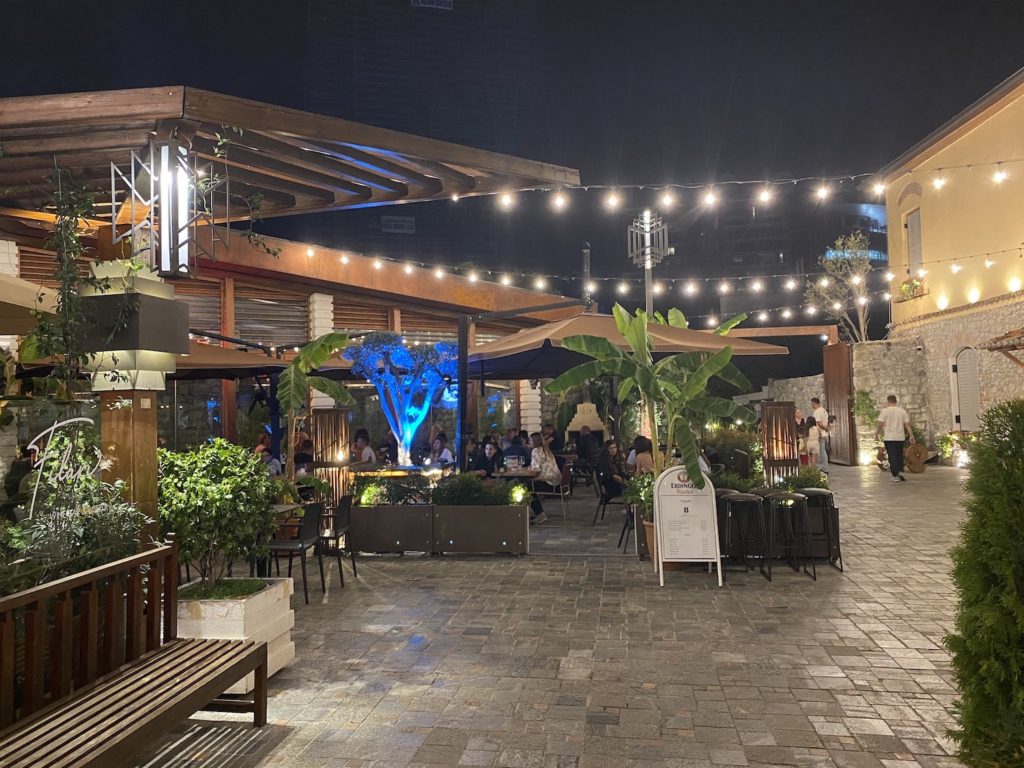
4. Eat in the Tirana Castle district
I ended up inside the old walls of the Tirana Castle on my first night in the city after getting settled in my AirBnB. In my initial research on Tirana, I’d read that the city is home to a wide variety of cuisines and top restaurants. Many of them are centered in the downtown core around Skanderbeg Square. One such area is within the ancient ruins of a medieval castle.
Only the Ottoman-era wall remains, but inside, visitors will find a wide variety of restaurants and artisan shops. The one I visited and would definitely recommend for a nice dinner is Tartuf Shop. This truffle specialist features salads, soups, pastas, and meat dishes all featuring their namesake ingredient. I chose the special of the day which was a homemade red bell pepper ravioli stuffed with mushrooms and topped with black truffle shavings. All for only 780lek ($7.30) – I love this country.
Allow 1-3 hours depending on which restaurant you choose. Main courses at Tartuf from 580lek ($5.50) to 1700lek ($16).

5. Marvel at the Pyramid of Tirana
In my planning before arriving in Tirana, I read about the strange communist pyramid that opened in 1988 as a museum dedicated to the former leader Enver Hoxha. Sadly it is currently surrounded by tall barriers, limiting views, as it is gutted to make way for reconstruction.
Following the collapse of Communism, the building was first repurposed as an exhibition hall, and later during the Kosovo War, it was used as a base for NATO. Since then it has fallen into disrepair and was until recently frequented by graffiti artists and skateboarders who would ride its sloping walls!
Today it is being refurbished to be a technological hub and education space for Tirana’s youth. Construction formally began in February 2021 by architecture firm MVRDV. Allow 15 minutes to walk the fencing. Free.
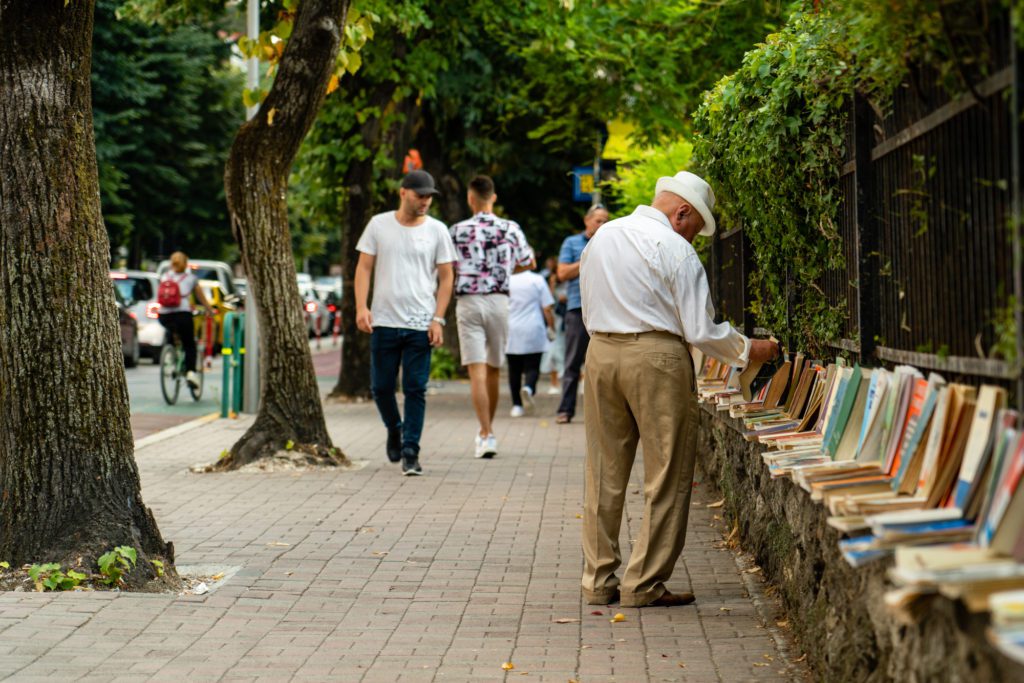
6. Get lost in the Blloku
Cross the river to the south of Skanderbeg Square, or southwest from the Pyramid and you’ll find yourself in the once off-limits Blloku neighborhood. The tree-lined avenues and narrow streets hold the cities best nightlife and entertainment. The upmarket area was once only accessible by the communist-era Albanian politburo. The former home of leader Hoxha is still prominently preserved in the center of the district.
Take a couple hours to stroll and explore the trendy cafes, shops, and restaurants. Be on the lookout for street side bookshops peddling their wares, and the towering modern art graffiti murals covering formerly drab communist high-rises.
Allow 1-2 hours to explore. Free.
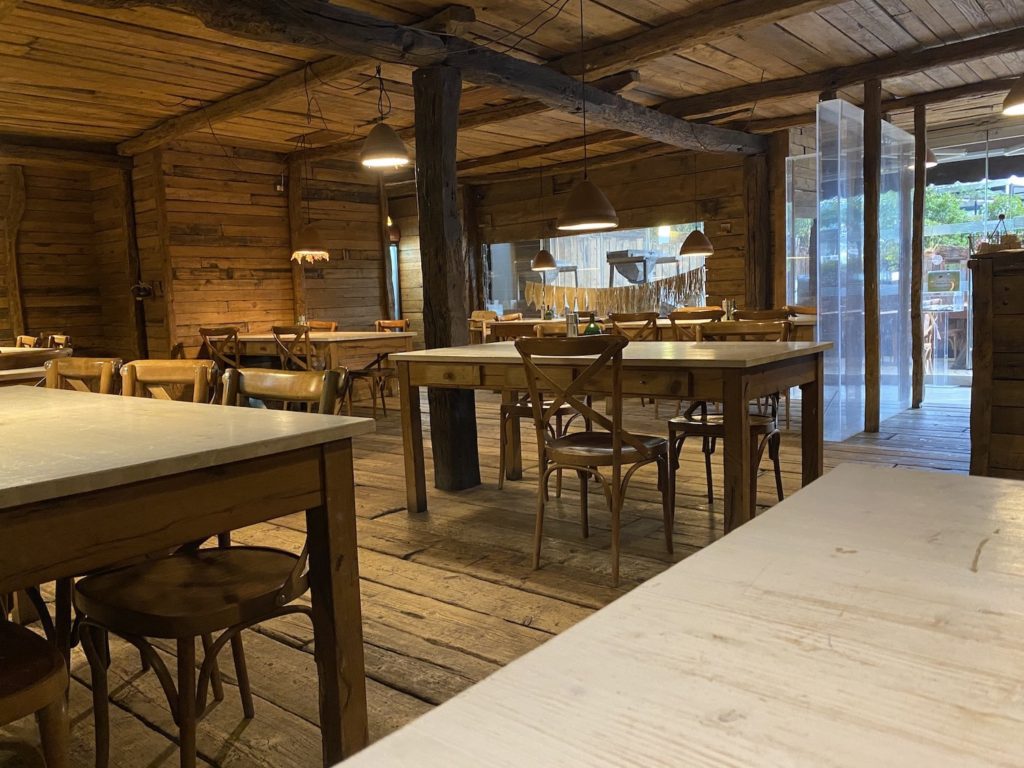
7. Eat at Mullixhiu
Located along the southern edge of downtown and the tree-lined Grand Park, Mullixhiu is celebrated as one of, if not the best restaurants in all of Albania. The name translates to “miller”, as in one who mills grain for bread. The walls, chairs, and tables are all rough wood and you feel transported back in time as soon as you enter.
Head chef Bledar Kola, who interned at culinary mecca Noma in Copenhagen, has designed a menu that features dishes from each region of Albania. While there is an extensive a la carte menu with larger plates, I recommend that you ask for the unlisted multi-course tasting menu. Available in 6 or 8 course options, I chose the larger size and was very stuffed by the end of the meal. You will not leave hungry as may be the case with some tasting menus.
Open for lunch and dinner, reservations are highly recommended. Allow 2-3 hours if you plan to do the tasting menu. Costs just $23-28 for the tasting menu.
Allow 1-2 hours to explore the park. Free.
8. Go shopping in the Pazari i Ri
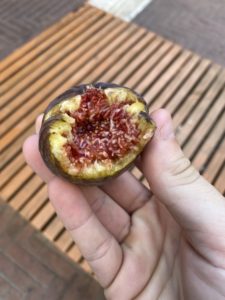
In evert city I visit, I always seek out the central farmer’s market or food hall. I love to eat and as such, love seeing how the local vendors bring their wares to the masses. When I lived regularly back in the US, you could find me at my local farmer’s market every week without fail.
So I was happy to stumble upon Tirana’s main outdoor food hall in my first full day of exploring the city. The market hosts fruit and vegetable vendors, antiques sellers, and tourist trinket hawkers. I bought a selection of the largest figs I’ve ever seen from a nice old lady. The biggest barely fit in my open palm!
Allow 1-2 hours to explore the district. Free to walk around.

My trip to Tirana surprised me in all the right ways. I had great meals, visited enlightening museums, and was able to easily explore the city on foot. As one of Europe’s youngest democracies, the country and its capital are still awakening and growing. The city has an inviting nature, encouraging exploration through its cute streets. Splashes of bright colors adorn the once drab housing blocks Communism left behind. Tirana and Albania have not been the closed off country they used to be for a long time and it is beyond time the world experiences all they have to offer.
Have you been to Tirana? What were your favorite things to do?
